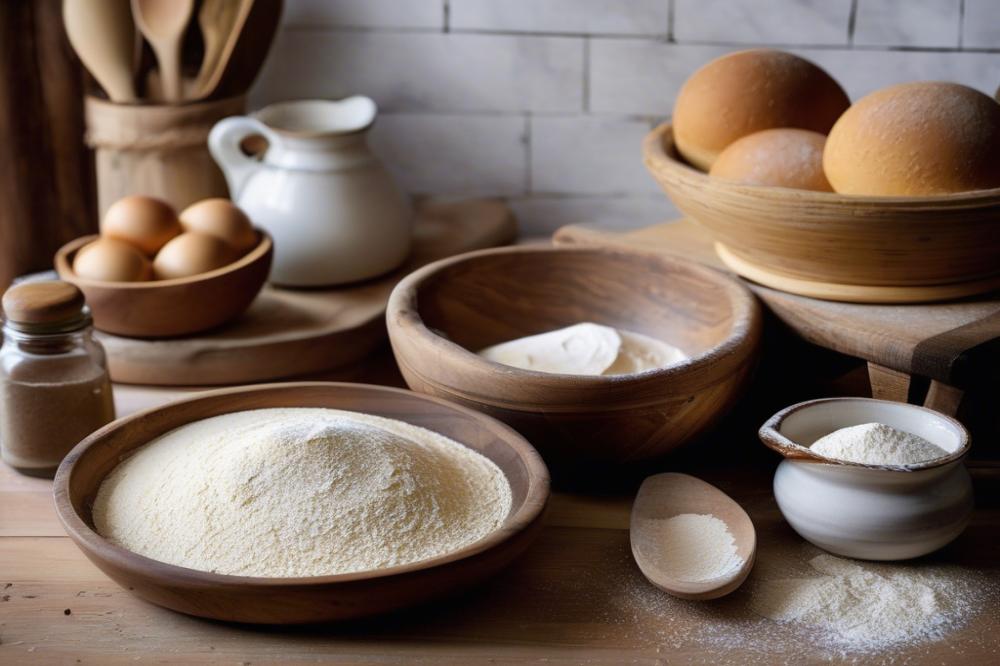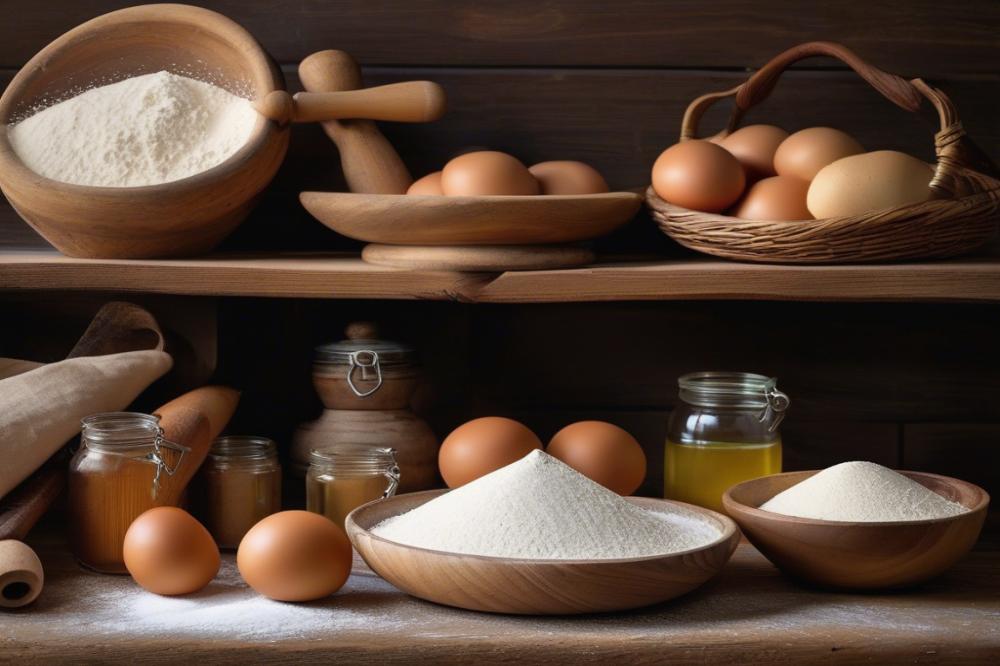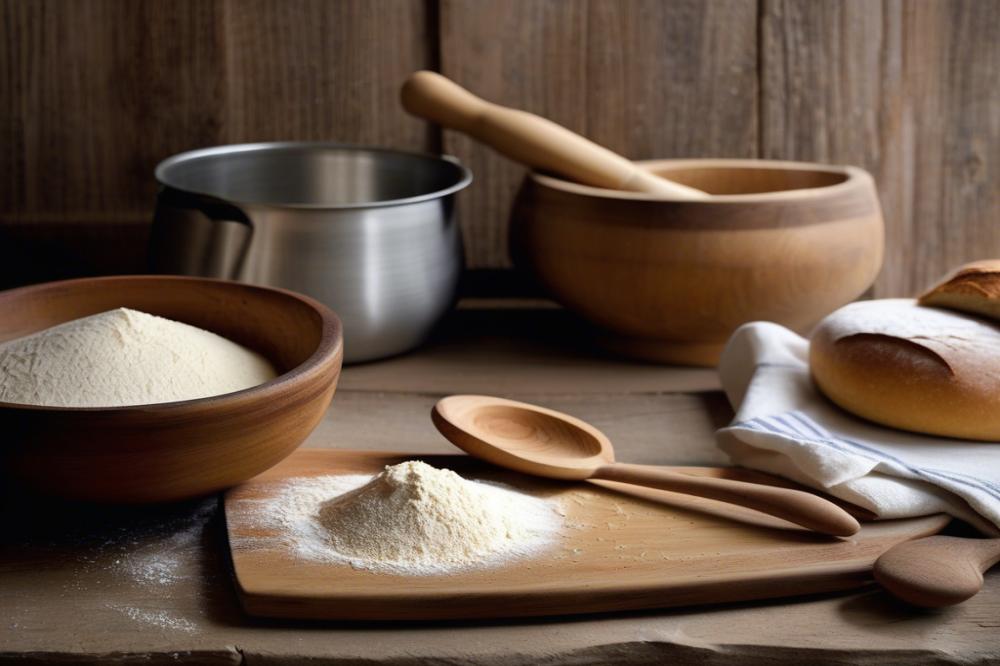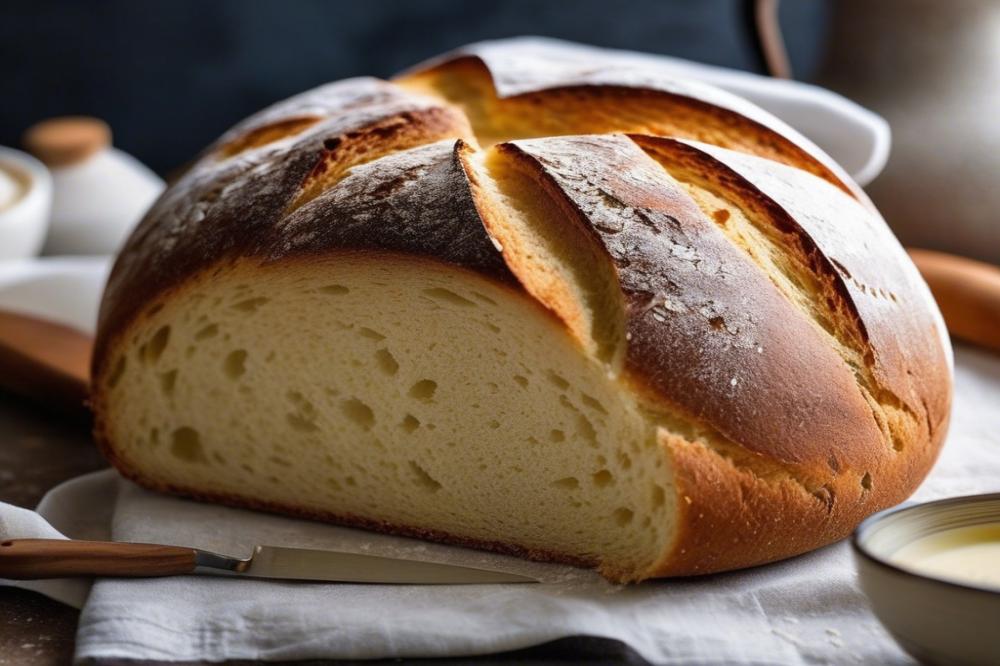Understanding Pane di Altamura
Pane di Altamura is more than just a loaf of bread; it embodies the heart of Italian cuisine, particularly in the region of Puglia. Many consider this bread a staple for both daily meals and special occasions. Its distinct characteristics make it a cherished food, perfect for complementing various dishes. Locals and travelers alike seek out this authentic bread for its rich flavors and textures.
Historically, this type of bread has deep roots that weave through the fabric of Italian history. The traditional methods of baking have been passed down through generations. Bakers still use simple techniques that honor the past. A unique sourdough starter is often employed, giving the bread a signature tang and an airy interior. Using semolina flour, sourced from local wheat varieties, further enhances its quality.
What sets this loaf apart is its crusty exterior and soft, chewy inside. Each bite offers a delightful contrast, a trademark of Pane di Altamura. The flavor is robust, with hints of the land where it is made. Homemade recipes often include a few simple ingredients, yet the result is magnificent. It reflects the essence of good baking. In every slice, the history and culture of Altamura resonate, making it a standout among other Italian bread.
Ingredients and Cooking Instructions

authentic Ingredients
To create a genuine Pane di Altamura, you will need the following ingredients:
- 500g semolina flour
- 200g all-purpose flour
- 300ml water at room temperature
- 150g sourdough starter
- 10g salt
- Optional: olive oil for added richness
Cooking Instructions
Start by preparing your sourdough starter if it is not already ready. This process should be done at least 24 hours in advance. In a spacious bowl, combine the semolina and all-purpose flours. Next, mix the room-temperature water with the sourdough starter. Add this mixture to the flour, blending it together thoroughly.
The next step is to knead the dough. Do this for about 10 minutes until it becomes smooth and elastic. Baking requires patience, so let your dough rest for three hours to rise. Cover the bowl with a damp cloth to keep it from drying out.
After this rise, shape your loaf carefully. Make sure it’s even and well-formed. Allow it to rise again for another two hours. During this time, preheat your oven to the appropriate temperature for baking.
Your Pane di Altamura will bake for 40 to 45 minutes. It should emerge from the oven with a crusty, golden exterior. The aroma of homemade Italian cuisine will fill your kitchen. Enjoy your authentic bread!
Nutritional Information

The nutritional values of any bread can vary widely, but when it comes to authentic Pane di Altamura, there are several noteworthy aspects. Each serving of this crusty bread offers significant health benefits due to its ingredients.
Semolina Flour
Semolina flour stands out because it is high in protein and fiber. These nutrients contribute to a feeling of fullness and support healthy digestion. Additionally, it serves as a good source of carbohydrates, which provide energy. This makes it a favorable choice for those looking to incorporate healthier options into their diet.
Sourdough Benefits
Sourdough bread, including varieties like Pane di Altamura, contains beneficial probiotics. These microorganisms can promote gut health. Furthermore, sourdough tends to have a lower glycemic index compared to traditional breads. This means it may lead to more stable blood sugar levels, which is vital for overall health.
Role of Salt
Salt is an essential ingredient in baking. It enhances flavor and contributes to the texture of bread. However, moderation is crucial due to its link to high blood pressure and other health issues. Balancing salt intake is key to maintaining a healthy diet while enjoying this delicious bread.
Homemade vs. Store-Bought
Homemade bread offers several advantages over store-bought options. Baking at home allows for better control over ingredients and portion sizes. Store-bought varieties often contain preservatives and additives. Making your own bread means you can feel good about what you eat, knowing every ingredient is fresh and nourishing. Traditional methods, like those used in Italian cuisine, can enhance both flavor and health benefits.
The Role of Semolina in Pane di Altamura

Semolina flour is made from durum wheat, which is a hard variety. This type of flour has a coarser texture compared to regular all-purpose flour. Its color is a bright yellow, which comes from the high carotenoid content in durum wheat. Bakers love semolina because it adds strength to dough. When mixed with water, this flour forms a strong gluten network that holds its shape well.
In the making of Pane di Altamura, semolina contributes significantly to the overall flavor and mouthfeel. The baking process brings out a nutty and slightly sweet taste. Additionally, this flour creates a beautiful golden crust. Many people find the crust to be crusty yet chewy, which enhances the experience of eating homemade bread. This unique quality is hard to replicate with softer flours.
Comparison with Other Types of Flour
Italian cuisine utilizes various flours, each bringing distinct characteristics to its baked goods. All-purpose flour is more common in many recipes, but it lacks the same richness that semolina provides. Many bakers notice that using all-purpose flour results in a softer texture and less complex flavor. 00 flour, another staple in Italian baking, is very fine and works well for pasta, but it doesn’t produce the same crusty exterior found in traditional Pane di Altamura.
When comparing these different flours, semolina stands out. It helps achieve the desired chewy texture in the bread. Other flours can make lighter, airier bread, but they do not celebrate the wonderful flavors present in Altamura. Bread made with semolina often pairs well with various toppings and ingredients, further enhancing the overall enjoyment.
Cultural Significance of Pane di Altamura
Pane di Altamura holds a central place in the culture of the Altamura region. This bread, known for its rustic qualities, is not only a food staple but also a symbol of local identity. Families in the area have been baking this authentic bread for generations. Many traditional recipes have remained unchanged, emphasizing the importance of heritage.
The bread features prominently in Italian cuisine. It showcases the use of local semolina flour and sourdough techniques. Throughout Italy, chefs and home cooks value its distinctive flavor and texture. This crusty bread has made its way into global kitchens as well. People all around the world now incorporate it into various dishes, reflecting its versatility.
Festivals and Events Celebrating This Traditional Bread
Several festivals honor this special bread each year in the Altamura region. These events highlight the local culture and the baking skills of area residents. Bread-making demonstrations often take place during these festivities. Visitors can learn about the authentic ways to prepare the dough and achieve the perfect crust.
Competitions are also common, inviting bakers to showcase their homemade creations. Local artisans use traditional methods, ensuring that the essence of Pane di Altamura is preserved. Such events not only celebrate this unique bread but also strengthen community bonds. Attendees enjoy tasting various styles while appreciating the dedication put into every loaf.
Baking Tips and Troubleshooting
Tips for Achieving the Best Results with Pane di Altamura
When baking authentic bread, using high-quality ingredients is important. Start with semolina flour that is coarse and fresh. This type of flour contributes to the characteristic texture and flavor. A sourdough starter can elevate your bread further. It adds depth and a slight tang, typical of Italian cuisine. Proper hydration of the dough is crucial as well. Aim for a wet, sticky consistency that will yield a crusty outer layer.
Pay special attention to the kneading process. Knead until the dough becomes smooth and elastic. This is a sign that gluten has developed well. Let the dough rise in a warm area until it doubles in size. Cover it with a damp cloth to prevent drying out. Don’t rush this fermentation period; good flavor develops over time.
Common Issues Encountered While Baking and How to Fix Them
Baking homemade bread can lead to common problems. Many encounter a dense loaf that lacks air pockets. This often happens when the dough is not kneaded sufficiently. If this occurs, consider using a longer kneading time next time. Another frequent issue is a flat loaf. This could result from under-proofing the dough. Always ensure it has doubled in size before baking.
A too-dry crust may also disappoint. This can be solved by spraying water into the oven as it preheats. The steam helps create a crusty finish. If over-browning happens, try lowering the oven temperature slightly. Pay attention to the baking time; every oven is different.
Best Practices for Storing and Serving the Bread
Once the Pane di Altamura is baked, cooling it is necessary. Place it on a wire rack to ensure even air circulation. For storage, a cotton bag is ideal. Avoid plastic as it traps moisture and softens the crust. Homemade bread stays fresh for a couple of days at room temperature. If you need to keep it longer, consider freezing it. Slice before freezing, and it will be ready for toasting later.
Serving this delightful bread complements many dishes. It pairs perfectly with olive oil, fine cheeses, and cured meats. Enjoying it fresh enhances the experience. Always share the bread warm for the best flavor. It’s a simple step that shows respect for traditional Italian baking. Baking can be a rewarding experience, so embrace each step with confidence and enjoy the process.
Final Thoughts on Baking Authentic Pane di Altamura
Baking authentic Pane di Altamura is not just about following a recipe; it is about connecting with a rich cultural heritage that dates back centuries. This bread stands out in Italian cuisine due to its deep roots in the Altamura region. It carries with it a history and tradition that many Italian families cherish.
Taking the time to bake at home can bring great joy. The aroma of freshly baked bread fills your kitchen, creating an inviting atmosphere. Each loaf you create becomes a personal craft that reflects your own style. Homemade bread offers a satisfaction that store-bought cannot replicate.
Culinary traditions shape communities and connect generations. By making this celebrated bread, you honor not just the recipe but the people who have crafted it over time. It serves as a reminder of the importance of maintaining cultural practices. Enjoying a slice of Pane di Altamura while sharing stories with family creates lasting memories.
Ultimately, embracing this tradition benefits both your kitchen and your spirit. As you knead the dough and watch it rise, take a moment to appreciate the artistry behind it. You are participating in something timeless. So gather your ingredients, roll up your sleeves, and begin your journey into this delightful aspect of Italian cuisine. It will be worth every moment.

